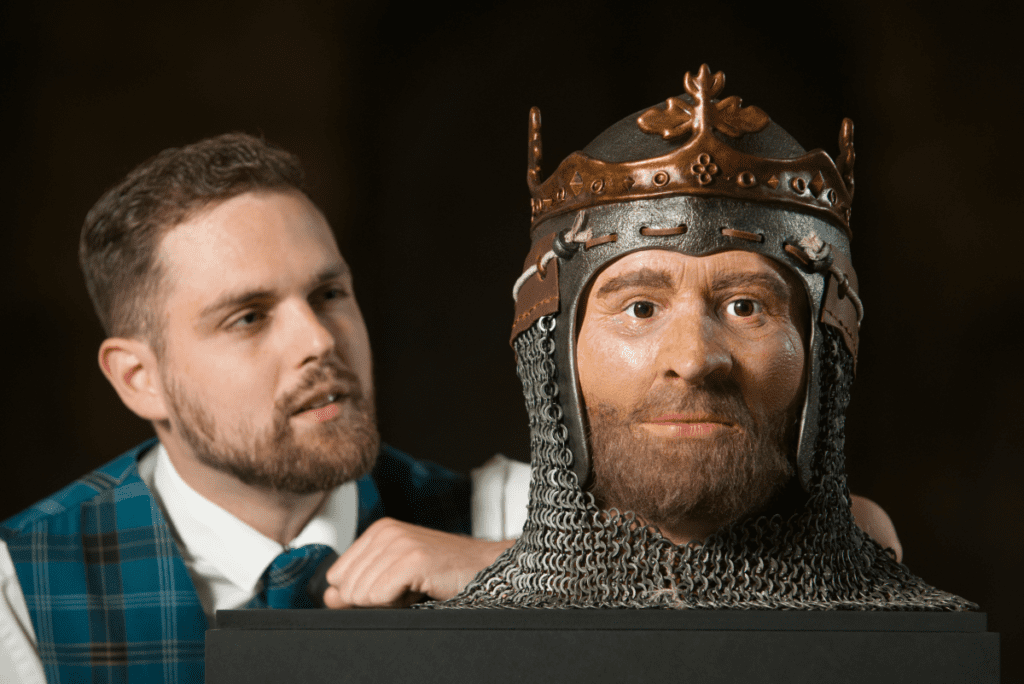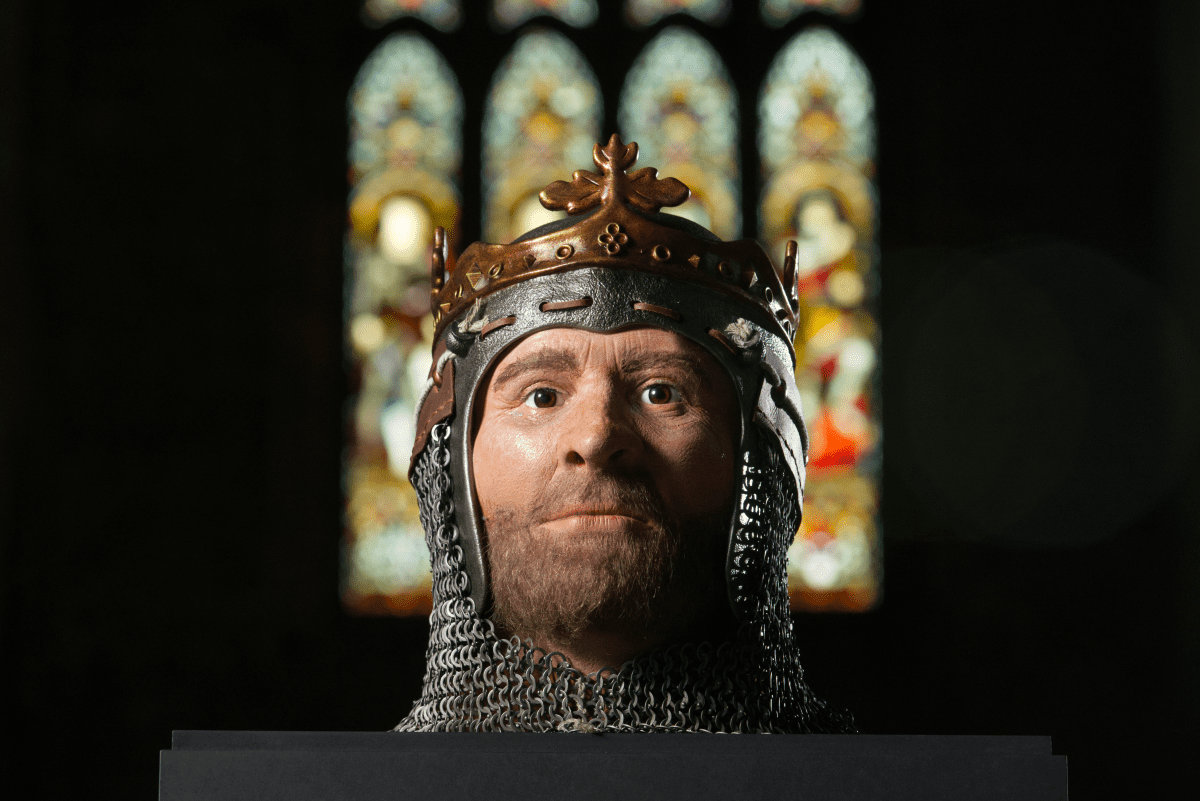
Robert the Bruce: 3D model of Scotland’s ‘hero king’ unveiled at Dunfermline Abbey
Born 750 years ago, he was Scotland’s hero king and some said the country ‘greatest monarch’.
And now visitors to Dunfermline Abbey can come face to face with Robert the Bruce, in the place he was buried, after a 3D model of his face was created.
Produced from a cast of his skull, the reconstruction is the most realistic likeness of Robert the Bruce to be produced to date.
The head is dressed in a helmet surmounted by a crown, as worn by Bruce at his most famous victory, the Battle of Bannockburn in 1314.
The model was created as part of a collaboration between the University of Glasgow and Liverpool John Moores University Face Lab, which released the digital model a few years ago.
Dr Martin MacGregor, from Glasgow University, first conceived of the model after the discovery of King Richard III of England’s skeleton in Leicester in 2012.
‘In a lifetime of only 55 years, Robert Bruce achieved the impossible and restored peace and freedom to a war-torn and colonised kingdom,’ Dr MacGregor said.
‘Contemporary sources tell us much about his remarkable life, but virtually nothing about his appearance.
‘This is what persuaded a team of historians, museum curators, geneticists, forensic scientists and medical artists to combine to create a new 3D depiction of the head of the hero-king, based upon the skull-cast taken from a skeleton in a tomb discovered within the ruins of Dunfermline Abbey in 1818.’

The model was produced using a combination of historical research and scientific analysis with advances in facial reconstruction techniques.
The team used a 3D laser scanner to scan the cast of Robert the Bruce’s skull held at Hunterian Museum, which allowed them to accurately establish the muscle formation from the positions of the skull bones.
Using CGI technology, realistically textured skin was then layered over the muscle structure.
The nose is the least accurate feature of this facial depiction due to the bone deterioration.
Historians have long debated whether Robert the Bruce suffered from leprosy. The team created two versions of the digital reconstruction, one without leprosy and one with a mild representation of leprosy.
For the 3D physical model, only the version showing no visible signs of leprosy was portrayed.
‘The head is dressed in a helmet surmounted by a crown, as worn by Bruce at his most famous victory, the Battle of Bannockburn in 1314,’ Dr MacGregor continued.
‘750 years after his birth in 1274, it is fitting that Dunfermline Abbey, where Robert Bruce was buried in 1329, should host an exhibition which brings us face-to-face with Scotland’s greatest monarch.’
The model will be on show until 7 December.
Read more Culture stories here.
Subscribe to read the latest issue of Scottish Field.
TAGS

